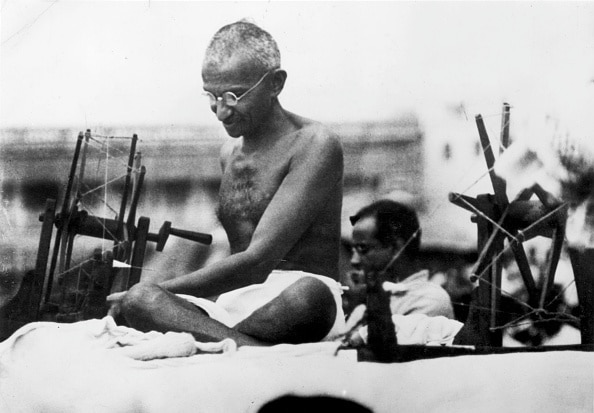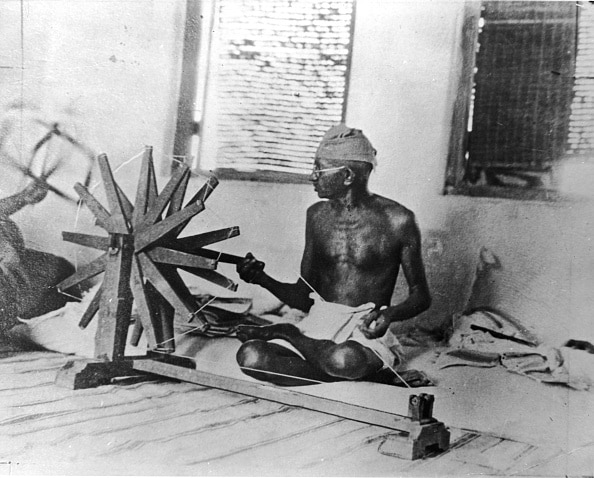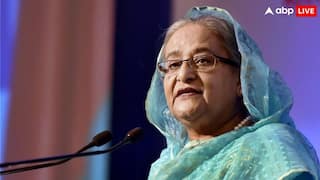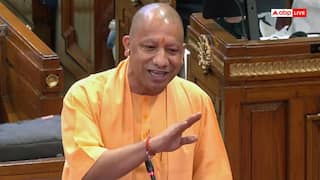Independence Day 2023: Role Of Khadi In India's Freedom Struggle And Its Significance In Today's Fashion Sphere
On the occasion of Independence Day, celebrated every year on August 15, let's delve into the pivotal role Khadi played in our struggle for independence leading to its enduring popularity.

New Delhi: Khadi, an inseparable strand in the tapestry of our nation's history, resonates with profound significance both in the annals of our freedom struggle and in the contemporary context. This iconic fabric continues to symbolize our fight for independence. Today, its relevance remains unwavering, as it mirrors our collective aspiration for a sustainable and a culturally enriched world.
On the occasion of Independence Day, celebrated every year on August 15, let's delve into the pivotal role Khadi played in our struggle for independence leading to its enduring popularity.
Khadi And Its Introduction In The Freedom Movement:
In 1918, Khadi was introduced to the people of undivided India with the aim of attaining self-sufficiency and breaking free from British textiles. Derived from the term khaddar, Khadi refers to handspun and hand-woven cotton cloth, which emerged as a powerful symbol during India's struggle for independence.
Mahatma Gandhi is credited for coining the term khadi owing to the fabric's rough texture. The process of spinning Khadi involves using a charkha, an Indian spinning wheel, which also became an iconic symbol featured on the Indian national flag designed in the 1930s.
The Khadi movement- a socio-cultural initiative- was initiated by Gandhiji from the Satyagraha Ashram, also known as the Sabarmati Ashram, located in the Ahmedabad district of Gujarat, in May 1915.

Khadi- An Integral Part Of Freedom Struggle
Going back into the pages of history, Khadi is an inseperable term associated with Mahatma Gandhi and the role that he played to give the piece of cloth the position and significance it has today. The key to khadi's success as a tool for the freedom struggle is its uniqueness in picking up and re-crafting the then-existing politico-economic critiques with its own distinctive qualities. As a result, it became a material to which people from various backgrounds could relate.
Beyond being a fabric, Khadi echoes Mahatma Gandhi's call for economic independence, a means to provide livelihoods to rural communities, and a conduit for preserving our craftsmanship. A living heritage, a testimony to the skill, dedication, and artistry of our weavers, Khadi’s significance goes beyond the threads and looms.

In this regard, Professor Sujata Mukherjee of Rabindra Bharati University said, "Since the 1920's Indian National Congress led by Mahatma Gandhi, in its struggle against British colonialism promoted Khadi as a symbol of self reliance, economic and social freedom from the 'Alien Rule'. It was widely accepted among different Congress workers, volunteers and followers of Gandhi. They campaigned for promotion of khadi since they also believed that it would revive the village economy and create rural employments."
The Evolution Of Khadi: From India's Struggle for Independence To The Realms Of Modern Fashion
"Once documented, Khadi was a major source of rural employment which was second, only to agriculture. Due to the dominance of poweloom sector nowadays, the handloom sectors got a backlash for many reasons. Some of them would be scarcity of yarns, and along with it, the rise of mill too provided a major setback. Moreover, the workers of handloom are less paid, overworked, and are also compelled to live under dire conditions. Other factors affecting the handloom weavers are lack of proper access to yarn in government investment and low wages", said Professor Tamoghna Mandal, Assitant Director of Fashion Technology department, Amity University, Kolkata.
"But, to raise awareness, the consumers need to step forward and purchase, once a new collection of khadi hits a store. We need to be aware of the threat posed by the fast fashion industry and need to make a thoughtful and understanding step towards slow- sustainability. This traditional craft has been a symbol and embodiment of Indian supremacy and awakening our spirits with the Indian independence. The hardship and the trouble taken by our freedom fighters should always be remembered and preserved and not be wasted," Professor Tamoghna further went on to say.
The Significance Of Khadi In Today's Fashion Sphere:
Khadi was neglected for many years after independence and came to be regarded as a 'poor man's fabric'. The textile re-emerged from the dusty cupboards of government-owned khadi emporiums and into the arena of fashion in the late 1980s and early 1990s.
It has evolved dramatically since its days as the robust, undyed, handwoven fabric promoted by Gandhi. The majority of fabric sold today is mechanised khadi, woven with new model charkhas, with yarn made through mechanised and semi-mechanised processes, even if handwoven.
"Khadi is not merely a textile; it is a living testament to our history and a dynamic canvas for artistic expression. Its revival reflects our commitment to preserving our roots while fostering economic growth and sustainable practices," said Ravi Gupta from Gargee Designer’s, passionately who believes that Khadi's journey is a seamless blend of tradition and innovation.
Additonally, Shalini Gupta, General Manager, Taneira said, "Khadi embodies the spirit of handspun and handwoven traditions that has survived generations in Indian history. Each meticulously woven piece carries within it the sweat, toil, and dedication of artisans who have honed their craft over generations. The enduring appeal across generations forms a timeless bond, uniting wearers in a shared celebration of heritage, craftsmanship, and the narratives that shape the history of Indian textiles. By embracing Khadi, modern individuals engage with a tangible connection to their roots, while also embodying the spirit of innovation and evolution within the realm of Indian weaves and handlooms."






































